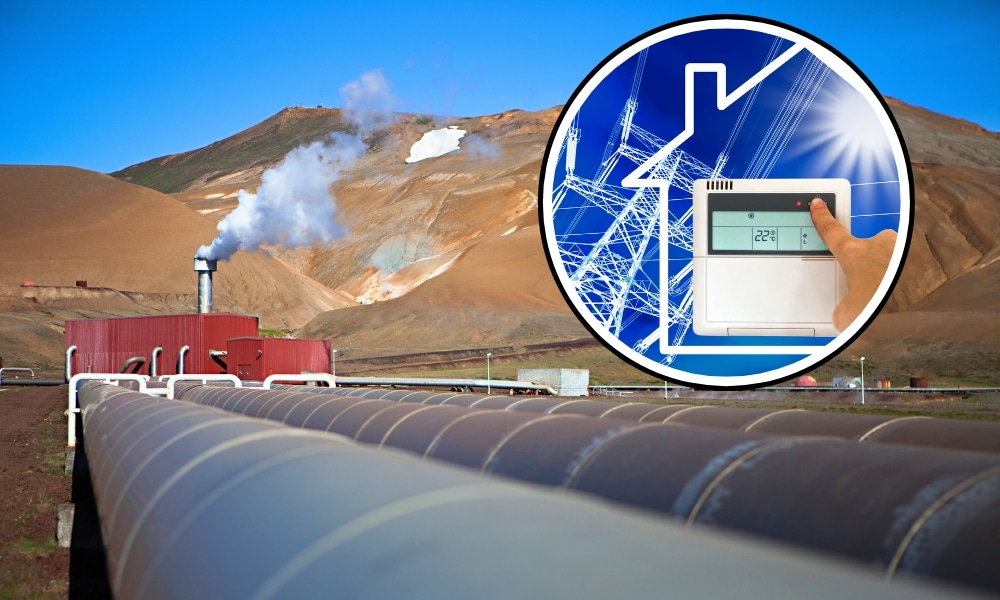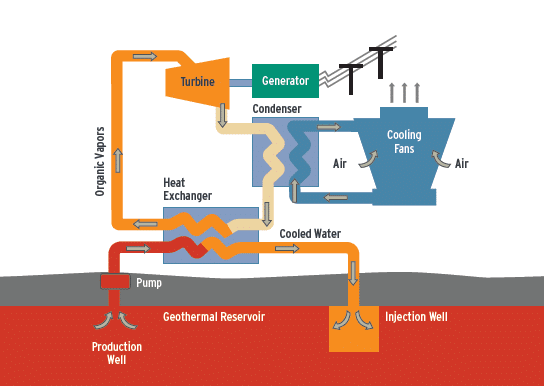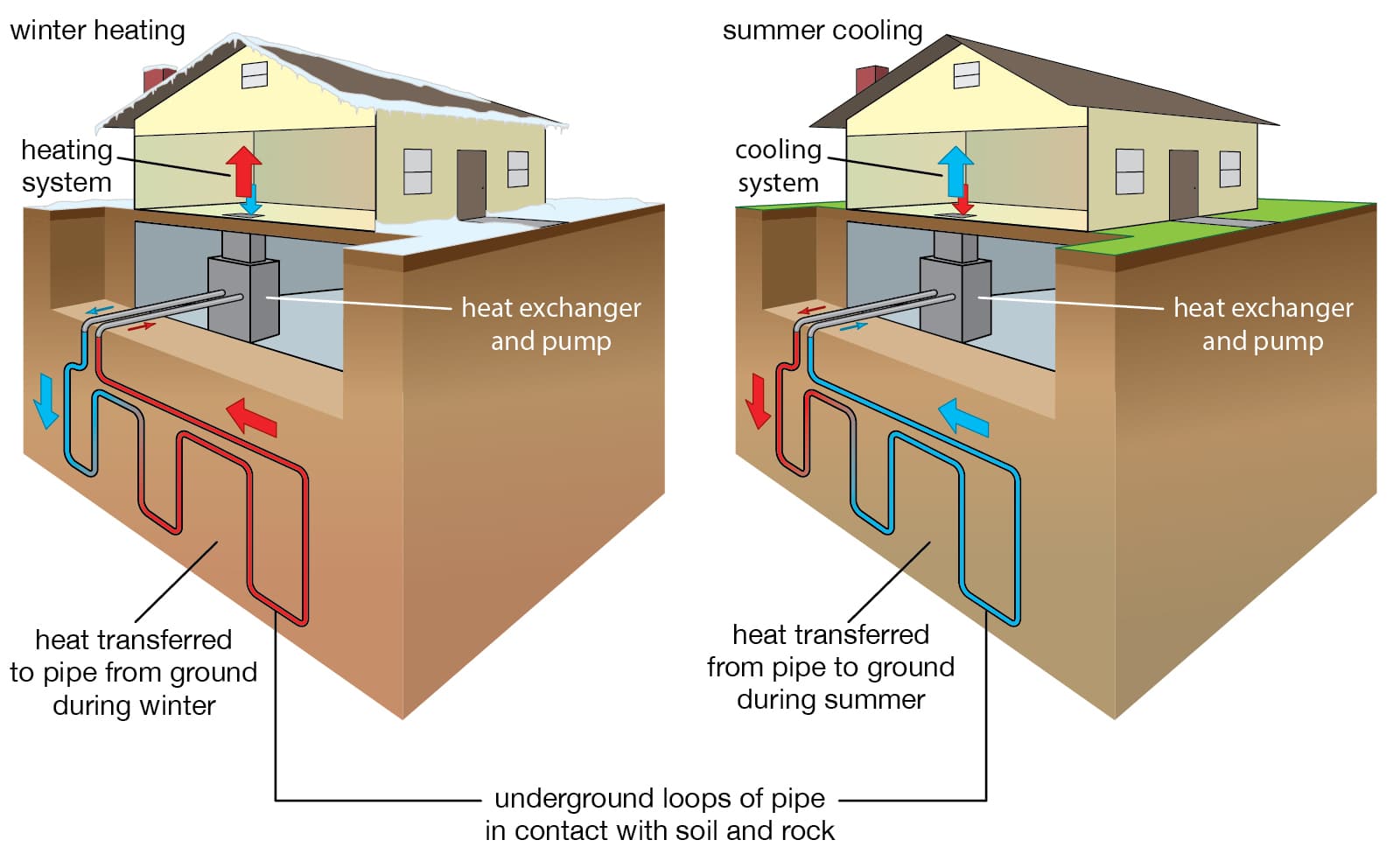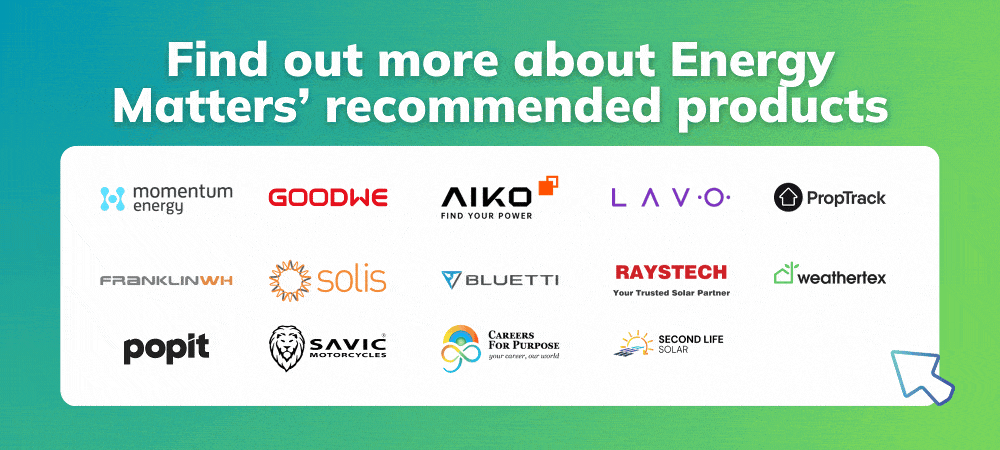Geothermal heating harnesses the Earth’s internal heat to provide sustainable and efficient thermal energy for residential, commercial, and industrial applications. While geothermal electricity generation has been limited in Australia, the direct use of geothermal heating has seen significant growth in recent years. Let us explore how geothermal heating works in Australia, exploring the underlying principles, current applications, technological advancements, and prospects.

On this page
Understanding geothermal energy basics
Geothermal energy technology utilises the Earth’s internal heat, which remains relatively constant throughout the year, to provide heating and cooling. This heat originates from the Earth’s core, where radioactive decay and residual heat from the planet’s formation generate immense thermal energy. In Australia, the geothermal gradient, or the rate at which temperature increases with depth, varies significantly depending on location.
Did you know Energy Matters is Australia’s largest renewable news, blog and educational resource? Subscribe to Energy Matters’ weekly newsletter and keep updated even with incentives, rebates and recommended solar product offers.
How geothermal systems work: A detailed look
Geothermal systems transfer heat between the ground and a building through pipes and heat pumps. This process involves:
- Heat exchange: Pipes buried underground circulate a fluid that absorbs or dissipates heat, depending on the season.
- Heat pump: The heat pump extracts heat from the fluid to warm the building in winter or expels heat from the building to cool it in summer.
- Distribution system: Heated or cooled air is distributed throughout the building via ductwork or radiant floor systems.

How geothermal systems work hinges on accessing and utilising this stored heat.
- Geothermal gradients: The temperature increases with depth, typically around 25-30°C per kilometre. In Australia, these gradients vary significantly depending on the geological location.
- Extraction methods: Techniques range from direct use of hot water to advanced enhanced geothermal systems (EGS).
- Heat sources: These can include hot dry rocks, Hot Sedimentary Aquifer (HSA) or hydrothermal reservoirs, and ground source heat pumps (GSHPs).
The most common system used in Australia for residential and commercial heating is a ground source heat pump (GSHP). Here’s a breakdown of the process:
- Ground loop installation:
- A ground loop is a series of pipes buried horizontally or vertically in the ground.
- Horizontal loops are typically used where sufficient land area is available, while vertical loops are preferred for smaller properties.
- These pipes are filled with a water-antifreeze solution that acts as a heat transfer fluid.
- Heat pump operation:
- The heat pump circulates the fluid through the ground loop.
- During winter, the fluid absorbs heat from the relatively warm ground (which maintains a stable temperature year-round).
- The heat pump then compresses this fluid, further raising its temperature.
- This heated fluid is then used to warm the building via radiators, underfloor heating, or forced-air systems.
- Summer cooling:
- The process can be reversed for cooling. The heat pump extracts heat from the building and transfers it to the cooler ground.
- This provides a much more efficient cooling system than traditional air conditioning.
Geothermal energy technology in Australia
Several geothermal heating systems are utilised, each with unique characteristics:
1. Direct-use systems
These systems use geothermal hot water from springs or reservoirs for heating applications such as space heating, greenhouse heating, and industrial processes. In Australia, the most extensive use of geothermal energy for direct heating is centred in Perth, Western Australia, where about 40% of the city’s heating needs are met through geothermal sources.
2. Enhanced Geothermal Systems (EGS)
EGS involves extracting heat by creating fractures in hot dry rocks and circulating fluids. This method is particularly relevant in regions without natural geothermal reservoirs. Advancements in drilling technology have renewed interest in EGS projects in Australia, such as the Paralana geothermal project in South Australia’s Far North.
3. Hot Sedimentary Aquifer (HSA) Systems
HSA systems target naturally occurring hot water in sedimentary basins. Australia’s geological landscape includes several sedimentary basins suitable for HSA development, offering significant potential for geothermal energy extraction.
4 . Ground-Source Heat Pumps (GSHPs)
Also known as geothermal heat pumps, GSHPs utilise the stable temperatures of the Earth’s shallow subsurface to provide heating and cooling. They are highly efficient and can significantly reduce energy consumption compared to traditional systems.
- In winter, the ground’s heat is extracted and transferred into buildings.
- In summer, excess heat from buildings is transferred back into the ground.

GSHPs: Closed-loop vs. Open-loop systems
GSHPs are categorised into two main types:
- Closed-loop systems
Closed-loop systems circulate fluid through a continuous loop of underground pipes, transferring heat between the ground and the building. They are further categorised into:
- Horizontal loops: Pipes are laid out in trenches over a large area, suitable for properties with ample land.
- Vertical loops: Pipes are installed in boreholes drilled deep into the ground, ideal for properties with limited space.
Closed-loop systems are more efficient and reliable than open-loop systems and are more cost-effective in the long run.
- Open-loop systems
Open-loop systems draw water from a well or surface water source, circulate it through the heat pump system, and then discharge it back to the source or another suitable location. While typically less expensive to install, they are less efficient than closed-loop systems and susceptible to water temperature changes or availability.
Geothermal energy technology in Australia: Specific applications
Australia’s geological diversity allows for various applications of geothermal energy technology.
- Residential heating and cooling:
- GSHPs are increasingly popular for home heating and cooling, offering significant energy savings and reduced running costs.
- According to the Australian Geothermal Association, a well-designed GSHP system can reduce energy consumption for heating and cooling by up to 70%.
- The initial investment can be higher, but the long-term savings make it an attractive option.
- Commercial and industrial applications:
- Large-scale geothermal systems can provide heating and cooling for commercial buildings, hospitals, and industrial facilities.
- Direct-use applications like greenhouse heating and aquaculture are also feasible in areas with high geothermal potential, such as the Great Artesian Basin.
- Using geothermal energy for industrial process heat is an area of growing interest.
- Geothermal power generation:
- While less common, high-temperature geothermal resources can be used for electricity generation.
- Australia has the potential for hot, dry rock geothermal energy, where water is injected into hot fractured rock to produce steam.
- Significant research is being undertaken to bring this technology into wider use.
Benefits and challenges
The benefits of geothermal heating are numerous. However, this technology also has challenges.
Benefits of geothermal heating | Challenges and considerations |
|
|
Current statistics and future outlook
According to the Australian Renewable Energy Agency (ARENA), while the adoption of residential geothermal systems is growing, large-scale geothermal power generation is still in its early stages.
- Currently, most installed geothermal systems in Australia are for direct-use applications, such as heating and cooling.
- Research and development efforts are focused on improving the efficiency and reducing the cost of geothermal energy technology.
Sample geothermal energy projects in Australia
Paralana Geothermal Project: This project in South Australia aimed to demonstrate the viability of EGS in extracting heat from hot dry rocks. Although facing challenges, it provided valuable insights into the technology’s potential.
The Great Artesian Basin (GAB): This vast underground water resource has the potential for direct-use applications, such as supplying heat for spas, agriculture, and industrial processes. The GAB underlies parts of Queensland, New South Wales, South Australia, and the Northern Territory.
South Australia’s Aquifer Thermal Energy Storage (ATES): ATES uses groundwater aquifers for seasonal thermal energy storage, heating, and cooling of buildings.
This helpful video is an excellent way to visually learn how geothermal systems work.
Sources: Australian Government, Geoscience Australia – Geothermal | Earth Science Australia – Geothermal Energy | Government of South Australia – Energy & Mining | Australian Academy of Science – How Geothermal Energy Works | MDPI – Economic Performance Indicators for a Geothermal Aquatic Center in Victoria, Australia | HeatCool – Geothermal Heating Systems for Sustainable Heating and Cooling
The future of geothermal energy in Australia
The future of geothermal heating in Australia hinges on continued technological advancements, government support, and increased public awareness. With ongoing research and development, the efficiency and affordability of geothermal systems will continue to improve. As Australia transitions towards a cleaner future, geothermal energy will play an increasingly important role in providing sustainable heating and cooling solutions. The ongoing development of enhanced geothermal systems is key to Australia’s energy future.
Energy Matters encourages you to explore the potential of geothermal heating for your home or business. Contact us today to learn how you can harness the Earth’s natural warmth and contribute to a sustainable future.
Energy Matters has been recognised for our continued excellence in the Australian solar industry. We provide our customers with high-quality resources, insight, and access to reputable solar quotes.
Our team of solar experts can help you get up to 3 FREE solar quotes from pre-qualified and vetted solar firms in your area.















































